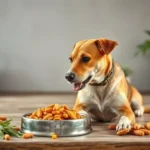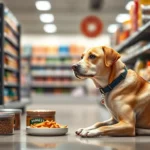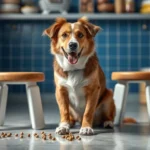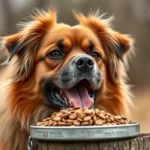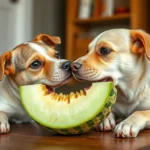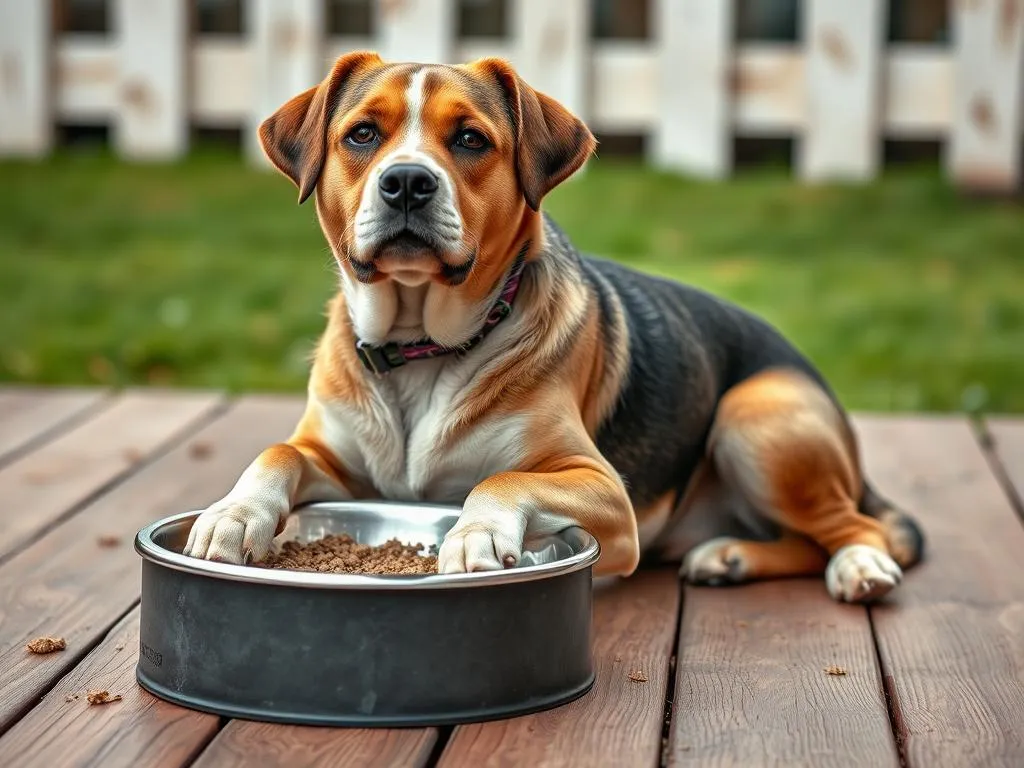
Introduction
Overview of Dog Nutrition
Proper dog nutrition is crucial for maintaining a healthy and happy life for our furry friends. Just like humans, dogs require a balanced diet to thrive, and their nutritional needs can significantly influence their health and behavior. From the energy they need for play to the nutrients that support their immune systems, what your dog eats can make all the difference.
Focus on Bowls
Interestingly, the way dogs eat can also be affected by the type of bowl they use. The right bowl can enhance their eating habits, prevent discomfort, and even reduce the risk of certain health issues. In this article, we will focus on the best dog bowls for large dogs, exploring how to choose a bowl that meets their specific needs.
Understanding Dog Nutrition
Basic Nutritional Needs
A well-rounded diet for dogs consists of macronutrients and micronutrients:
- Macronutrients: These include proteins, fats, and carbohydrates.
- Proteins are vital for growth, repair, and overall health.
- Fats provide energy and support cell function.
-
Carbohydrates are a source of energy and can assist in digestion.
-
Micronutrients: Essential vitamins and minerals play crucial roles in maintaining overall health, supporting the immune system, and aiding in metabolic processes.
Life Stages and Nutritional Requirements
Dogs have different nutritional needs at various life stages:
- Puppies require higher protein and fat levels to support their rapid growth.
- Adult dogs need a balanced diet to maintain their energy levels and overall health.
- Senior dogs often benefit from diets that are easier to digest and lower in calories to prevent obesity.
Additionally, factors such as activity levels and specific health conditions may necessitate adjustments in their diet.
Factors to Consider When Choosing Dog Bowls
Material Types
When selecting a bowl for your large dog, the material can significantly impact its durability and safety.
-
Stainless Steel: This material is highly durable, resistant to rust, and easy to clean. However, it can be noisy when dogs eat or drink.
-
Ceramic: These bowls are often aesthetically pleasing but can chip or break easily. They are also heavier, which can help prevent tipping.
-
Plastic: While lightweight and affordable, plastic bowls may harbor bacteria and can scratch easily, leading to health concerns.
Size and Depth
Choosing the right size and depth for your large dog’s bowl is crucial. A bowl that is too small can lead to spillage and discomfort while eating. Deep bowls help prevent food from spilling out and can accommodate the larger snouts of big breeds.
Design Features
Innovative design features can enhance a dog’s eating experience:
- Non-slip bases help keep the bowl in place, preventing spills and messes.
- Elevated bowls are beneficial for large breeds, reducing strain on their necks and joints.
- Interactive or slow-feed designs can prevent overeating and encourage healthier eating habits.
Top Features of the Best Dog Bowls for Large Dogs
Durability and Longevity
For large dogs, durability is a top priority. Look for bowls made from materials that withstand wear and tear, such as stainless steel or heavy-duty ceramic. These materials should resist scratching and staining, ensuring that the bowl lasts longer and remains hygienic.
Ease of Cleaning
Keeping your dog’s bowl clean is vital for their health. Look for best dog bowls for large dogs that are dishwasher-safe or made from non-porous materials, which make cleaning a breeze and prevent bacteria buildup.
Safety Considerations
Safety should never be compromised. Choose bowls made from BPA-free and non-toxic materials. Additionally, avoid bowls with sharp edges or unstable designs that could pose a risk to your dog’s safety while eating.
Review of the Best Dog Bowls for Large Dogs
To help you make an informed decision, we’ve compiled a list of some of the best dog bowls for large dogs. Below is a comparison table highlighting key features:
| Brand | Material | Size Options | Design Features | Price Range |
|---|---|---|---|---|
| Brand A | Stainless Steel | Large | Non-slip base | $20-$30 |
| Brand B | Ceramic | Medium, Large | Elevated design | $25-$40 |
| Brand C | Plastic | Large | Non-slip, lightweight | $10-$20 |
| Brand D | Stainless Steel | Extra Large | Slow-feed design | $30-$50 |
Detailed Reviews
Brand A: Features, Pros, and Cons
Brand A offers a durable stainless steel bowl that is resistant to rust and scratches. Its non-slip base ensures stability during mealtime.
Pros:
– Highly durable
– Easy to clean
– Non-slip feature
Cons:
– Can be noisy during use
Brand B: Features, Pros, and Cons
Brand B’s ceramic bowl comes with an elevated design that is ideal for larger breeds, making it easier for them to eat.
Pros:
– Aesthetic appeal
– Elevated design helps with digestion
Cons:
– Prone to chipping if dropped
Brand C: Features, Pros, and Cons
Brand C provides a lightweight plastic option that is easy to carry and clean. It’s designed with a non-slip base, making it great for active eaters.
Pros:
– Affordable
– Lightweight and portable
Cons:
– May scratch easily over time
Brand D: Features, Pros, and Cons
Brand D features a slow-feed design that encourages better eating habits and prevents bloating, especially for larger breeds.
Pros:
– Prevents overeating
– Dishwasher safe
Cons:
– Higher price point
Customer Reviews and Ratings
Customer feedback plays a significant role in determining the quality of dog bowls. Many dog owners praise the durability and ease of cleaning of stainless steel bowls, while others appreciate the elevated designs for their large breeds. However, some customers have expressed frustration with plastic bowls scratching and harboring bacteria over time.
How to Train Your Dog to Use a New Bowl
Transitioning to a New Bowl
Switching to a new bowl may take some time for your dog to adjust. Here are a few tips to make the transition smoother:
- Gradually introduce the new bowl alongside the old one.
- Encourage your dog to explore the new bowl by placing treats inside.
Establishing a Routine
Consistency is key when it comes to feeding times and locations. Establishing a routine will help your dog associate the new bowl with mealtime, making them more comfortable and willing to use it.
Additional Dog Nutrition Tips
Understanding Feeding Guidelines
Feeding guidelines can vary based on a dog’s age, weight, and activity level. It’s essential to consult your vet to determine the right portion sizes for your large dog to maintain a healthy weight.
Common Dietary Issues in Large Dogs
Large dogs can face specific dietary challenges, such as obesity, allergies, and digestive problems. Always consult a veterinarian for personalized nutrition plans that cater to your dog’s unique needs.
Conclusion
In summary, selecting the right bowl is an essential aspect of your dog’s nutrition and overall health. The best dog bowls for large dogs not only cater to their size but also enhance their eating experience and promote better health. Proper nutrition is a cornerstone of good dog care, impacting everything from energy levels to longevity. Choosing a bowl that fits your dog’s needs is just one step towards ensuring they lead a happy and healthy life.
FAQs (Frequently Asked Questions)
What is the best material for dog bowls?
Stainless steel is often considered the best material due to its durability, ease of cleaning, and resistance to rust and bacteria.
How often should I clean my dog’s bowl?
It’s advisable to clean your dog’s bowl daily to prevent bacteria buildup and ensure your pet’s health.
Can the type of bowl affect my dog’s eating habits?
Yes, the type of bowl can influence your dog’s eating habits, comfort, and overall health.
What size bowl do I need for my large dog?
Choose a bowl that is large enough to accommodate your dog’s size without causing spillage or discomfort. A bowl with a depth of at least 3-4 inches is generally suitable for large breeds.

